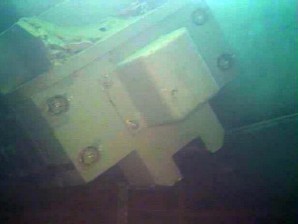Cooling systems restored at Fukushima reactors—Tepco

JAPAN, OKUMA : This handout picture taken by Tokyo Electric Power Co (TEPCO) on April 13, 2012 shows a wrecked 35-ton crane inside a fuel spent pool at the unit three reactor building of the Fukushima Dai-ichi nuclear power plant at Okuma town in Fukushima prefecture, northern Japan. AFP
TOKYO— Technicians have restored power to all cooling systems at the reactors of Japan’s tsunami-hit Fukushima nuclear plant, the operating company said Wednesday after a blackout sparked a new crisis.
Equipment in pools used to cool used fuel became fully operational from 0:12 am (1512 GMT), some 30 hours after the blackout, Tokyo Electric Power Co. (Tepco) said.
Used nuclear fuel becomes dangerous if its temperature is allowed to rise uncontrollably to the point where a self-sustaining critical reaction begins, causing a meltdown.
The incident was a reminder of the vulnerable state of the Fukushima plant two years after the tsunami, despite the government’s claim that the reactors are in a “cold shutdown” state and no longer releasing high levels of radiation.
The latest crisis began Monday night with a brief power outage at a building on the plant’s site that serves as the central command for work to contain the nuclear accident and to dismantle the reactors.
Article continues after this advertisementThe initial glitch cut electricity to the cooling pools at three of four heavily damaged reactors as well as a common pool at 7:00 pm (1000 GMT) on Monday, according to Tepco.
Article continues after this advertisementBy Tuesday evening engineers had managed to restart cooling systems in the three affected reactor pools, Tepco said.
A separate cooling system for the common pool was restarted just after midnight Wednesday, ending the latest problem, the company said.
“At 0:12 am today (Wednesday), the common pool cooling purification system was restarted,” Tepco said in a statement. “All of the systems have been restarted.”
Tepco has stressed that the glitch was fixed before any lasting damage was caused, saying the temperatures of all the fuel pools remained well below the safety limit of 65 degrees Celsius (149 degrees Fahrenheit).
Company officials say there has been no major change to the level of radioactivity at nearby monitoring spots.
Monday’s outage knocked out power to nine facilities at the plant, its largest simultaneous electricity failure since it was brought under control in December 2011.
Tepco is yet to identify the cause of the blackout, but suspects a problem with a switchboard.
The firm says the incident did not affect the injection of cooling water into reactors whose cores melted down soon after the start of the 2011 nuclear crisis.
The meltdown of three of Fukushima’s six reactors occurred after an earthquake and huge tsunami on March 11, 2011, which shut off the power supply and cooling system.
Tepco drew flak for playing down the scale of the disaster in the first few months. It has since admitted it had been aware of the potential dangers of a big tsunami but did nothing for fear of the reputational and financial cost.
The latest incident rekindled public concern about whether the politically connected utility is being fully transparent.
Tepco informed the government’s regulatory agency about the blackout shortly after it started, but waited three hours before issuing a public press release.